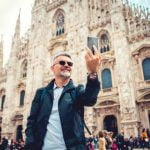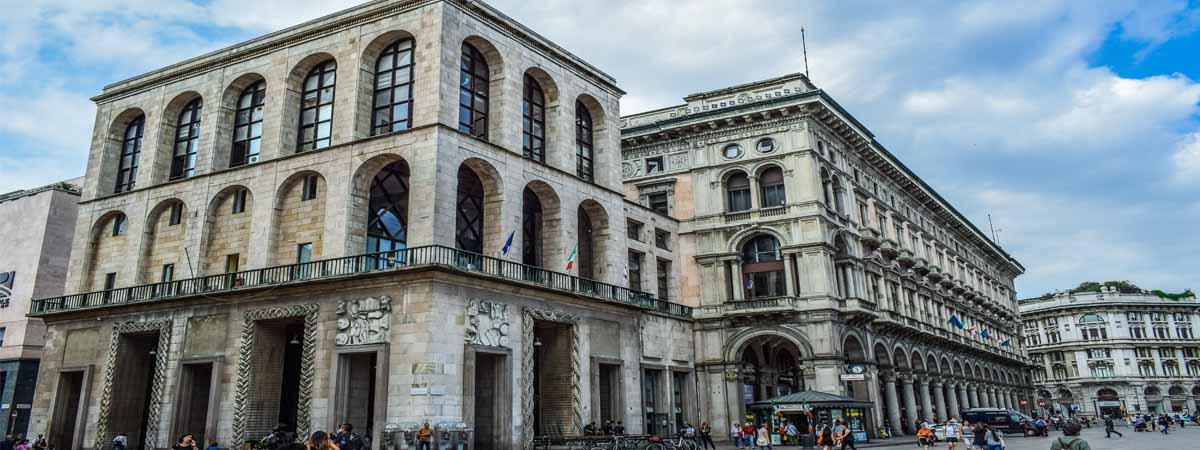Milan may be well known as the fashion and industrial design capital of the world, but its cultural presence reaches much further. Historically, the city has upheld a sense of pride for its values and economic standing and served as a center of industry for Italy. This pride is evident today and is shown off to the millions of overseas visitors the city welcomes annually.
While Milan may often be in the shadows of Italy's capital city of Rome, Milan is recognized as the Italian capital of production, modernization and efficiency, as well as a leader in Italy's economic and finance sectors. For decades, Milan has been regarded as the industrious heart of Italy and a driver of international business. From the preserved pieces of history to the many modern-day additions found throughout Milan - travelers can experience the city’s rapid development firsthand.
Along with other major world cities such as Paris and New York City, the fashion industry is prominent in many aspects of Milan's culture. Major brands such as Prada, Armani and Valentino are headquartered within the design capital and contribute to the upscale shopping opportunities in the most prestigious areas of the city. In addition, the world of fashion expands to include large international events such as Milan's Fashion Week and academies dedicated to studying the industry and developing the next generation of innovators. The fashion world brings a sense of sophistication and individuality to this large metropolis.
Milan is also a center of education in Italy. Numerous universities and institutions are available to the many local and international students that gravitate to the city for higher education. At the top of the rankings is the Polytechnic University of Milan. Founded in 1863, it is the oldest college in the city and hosts over 40,000 students majoring in architecture, design, and engineering each year. Other prominent universities include the University of Milan, Bocconi University, Università Cattolica del Sacro Cuore, University of Milan-Bicocca, and the New Academy of Fine Arts. With so many options in a variety of study areas, the student population adds a young and diverse edge to the city's feel.
ART
The art found in the many Milanese galleries, museums, and historic architecture is a highlight for many visitors. There is a vast range of influences and styles to be admired - the Middle Ages produced figurative and Gothic pieces, while the Futuristic movement led the way in the twentieth century.
For a unique and extensive art experience, visitors should explore the Castello Sforzesco - a fifteenth century castle that now houses numerous art collections and exhibits. Among the great treasures are Leonardo da Vinci's manuscript - Codex Trivulzianus and the last sculpture created by Michelangelo – Pietà Rondanini. The Castello complex has even more history and art to offer in its numerous museums, including the Pinacoteca del Castello Sforzeco (an art gallery with works by Mantegna, Titian, Canaletto, and more), the Museum of Ancient Art, the Museum of Musical Instruments, the Archaeological Museum, the Antique Furniture and Wooden Sculpture Museum, and the Egyptian Museum.
While not born in Milan, Leonardo da Vinci spent 17 years in the city and left his mark during this time. He was commissioned by Francesco Sforza, the Duke of Milan, to paint The Last Supper in the convent of Santa Maria delle Grazie. It was also in Milan that Leonardo painted masterpieces such as the twin paintings entitled Virgin of the Rocks as well as Mona Lisa, St. John the Baptist, Portrait of a Musician, and Lady with an Ermine. While in Milan, Leonardo worked on what became his most famous unfinished work, an equestrian statue dedicated to Francesco Sforza, which was meant to be the largest of its kind in the world. Leonardo’s detailed designs led to the construction of other monumental horse statues in honor of the artist, both in Italy and worldwide, some 500 centuries later.
Art lovers visiting Milan will find an impressive number of art galleries and museums to explore. Principal among these is the Pinacoteca di Brera, which hosts one of the most important collections of art in Italy. Spanning from the Gothic period to the twentieth century, travelers can admire works by master artists such as Andrea Mantegna, Raphael, Piero della Francesca, Donato Bramante, Titian, Giovanni Bellini, Tintoretto, Caravaggio, Francesco Hayez, Amedeo Modigliani, and more. Among the most iconic works are Madonna of the Cherubim and Lamentation of Christ by Andrea Mantegna (with the latter being a masterful study of perspective), The Marriage of the Virgin by Raphael, Pietà by Giovanni Bellini, Holy Conversion by Piero della Francesca, and The Kiss by Francesco Hayez. This remarkable art gallery is part of the Brera Academy of Fine Arts, one of the most influential art academies in Italy.
Other classic museums in the city include the Triennale Design Museum (renowned for its design exhibits), the Pinacoteca Ambrosiana (home of da Vinci’s Portrait of a Musician and Caravaggio’s Basket of Fruit), the Bagatti Valsecchi Museum (where paintings by Bellini and Renaissance decorative items such as ceramics and furniture can be admired), the Diocesan Museum (with an impressive collection of religious art from Milan and the Lombardy region) and the Poldi Pezzoli Museum (which is notable for its collection of paintings as well as elegant rooms decorated with historic furniture).
Though it is not a formal museum, the city’s Monumental Cemetery deserves a special mention. This vast museum hosts countless important graves, including those of notable locals and other important Italians such as Alessandro Manzoni and Carlo Cattaneo. The majority of the tombs are decorated with extravagant artistic monuments, such as the Campari family tomb (which is composed of a sculpture that recreates da Vinci’s Last Supper with members of the family), leading this cemetery to be characterized as an open-air museum.
In addition to historic art museums, Milan has much to offer those who are interested in modern and contemporary art. The city is home to the Modern Art Gallery, which hosts works from the 1700s to the 1900s, as well as Gallerie d’Italia (with a focus on the 19th and 20th centuries), and the Museo del Novecento (a museum dedicated to art of the twentieth century set in a modern building with a unique design).
The city’s museums dedicated to contemporary art can be described with one word: innovative. Many extend past the classic medium of painting, such as Armani/Silos, which displays the most iconic works of Italian fashion designer Giorgio Armani in a renovated granary, and the Museum of Cultures (MUDEC), which is set in a restored factory and features temporary exhibitions focused on unique artistic and cultural themes. Other key contemporary art museums in Milan include the Prada Contemporary Art Museum, the Contemporary Art Pavilion, Pirelli Hangar Bicocca, and Fabbrica del Vapore, which is another artistic space created in a former industrial complex, in this case a tram factory.
With the city serving as a creative and design hub, it is clear that new and unique museums will continue to be established throughout Milan, the perfect complement to the city’s already vast collection of historic art.
ARCHITECTURE
Breathtaking, historic architecture can be found around every corner in Milan. From Art Deco and neo-Romanesque to Art Nouveau and Gothic - the various styles of architecture to be seen contribute to the extensive cultural landscape that flourishes throughout the city.
Among the oldest remaining structures are the basilicas that stand at the four city gates. Sant'Ambrogio, San Simpliciano, San Nazaro in Brolo, and Sant'Eustorgio were erected by the Bishop of Milan during the late 4th century as part of a city transformation.
A must-see is the well-known Milanese landmark - the Gothic cathedral, Duomo di Milano, which is the largest in the country and among the largest in the world, standing at 354 feet tall and 302 feet wide. Construction of the church began in the 14th century and took almost six centuries to complete, with the help of many architects and engineers. The substantial structure can hold over 20,000 people. The outside of the building includes beautiful pinnacles, turrets, approximately 3,000 statues, and 52 decorative pillars. Pink toned marble can be seen throughout, including in the three incredible windows found in the apse and in the arches and buttresses. Visit the interior to see even more architectural details and timeless works of art, such as Pellegrino Pellegrini's three altars. Do not miss the red lightbulb located above the apse as this represents the supposed location of one of the nails used in Jesus' crucifixion. Lastly, visitors can head to the rooftop to get an astonishing view of the Milan as well as La Madonnina - the gold sculpture of Mary placed on the cathedral's tallest spire, which is seen as a protector of Milan.
In addition to the Duomo, Milan is home to several other architectural marvels attributed to various historical periods. From Piazza del Duomo, travelers can admire the famous Galleria Vittorio Emanuele II, an ornate double arcade that was designed in the nineteenth century. From the iron and glass roof to the mosaic floors, this monument is truly breathtaking. As the first shopping mall in Italy, the design of the Galleria has influenced architecture in other parts of Italy, such as Naples’s Galleria Umberto I, and worldwide.
The Galleria connects Piazza Duomo to another important site, Teatro alla Scala. This famous site quickly became one of the most prestigious opera theaters in the world. Constructed from 1776 to 1778, the grand theater features Neo-classical and Baroque elements. The modest façade is composed of harmonious geometric features, while the interior is richly decorated with bright red seats, gold accents, and an elegant chandelier. With a capacity of just over 2,000, there’s no better place to enjoy an opera or ballet production in Italy.
Another key part of Milan’s vast cityscape is the Castello Sforzesco, or Sforza Castle. Constructed in the fifteenth century under the order of Francesco Sforza, the castle was expanded and renovated in later centuries. Today, the castle features a quadrangular plan with five defensive towers, a main gate, internal courtyards, and loggias. Behind the castle, travelers can visit Parco Sempione, an impressive park that spans 95 acres. Adjacent to the park is the Arco della Pace (Arch of Peace), a Neo-classical nineteenth century triumphal arch decorated with bas-reliefs and statues.
Other classic examples of Milan’s historic architecture include the city’s many churches such as the Basilica of San Lorenzo Maggiore, the Church of San Maurizio al Monastero Maggiore, the Church of Santa Maria presso San Satiro, and the Church of San Babila.
Even after admiring the historic architecture of Milan, there is still plenty of modern architecture to see in innovative districts of the city such as Porta Nuova and CityLife. One excellent example is the Pirelli Tower. As part of the nationwide reconstruction efforts after World War II, Pirelli Tower was completed in 1958 and it immediately became a symbol of Italy’s post-war economic recovery. Designed by famed Milanese architect Gio Ponti, the Pirelli tower was the tallest building in the European Union until 1966 and the tallest building in Italy until 1995. It served as a direct model for New York City’s MetLife Building, and inspired further architectural innovations completed in Milan in the twentieth and twenty-first centuries.
As a whole, the preparations for EXPO 2015, the 2015 World’s Fair that was hosted in Milan, pushed the city to reinvent itself from an architectural perspective. New and modern neighborhoods were born and skyscrapers with out-of-the-ordinary shapes were erected. Porta Nuova in particular grew tremendously during this period, with architects following the trail of the Pirelli Tower. One unique example is Bosco Verticale, a residential high-rise designed as a vertical forest by Stefano Boeri. The innovative project is a push towards architectural biodiversity with an emphasis on the relationship between humans and nature. The site’s two towers are home to 800 trees and approximately 20,000 plants.
Even Milan’s more traditional skyscrapers have a unique twist, such as Unicredit Tower in Piazza Gae Aulenti, which was built following an energy efficient design on a sustainable site. At a height of nearly 760 feet (making it twice as tall as the Duomo of Milan and four times as tall as the Leaning Tower of Pisa), Unicredit Tower is the tallest building in Italy. The top of the skyscraper can be reached via elevator in approximately 40 seconds, where it is possible to admire extensive panoramas of Milan and the surrounding area.
Another impressive skyscraper is Palazzo Lombardia, which is the seat of Lombardy’s regional government. This remarkable structure was granted the International Architecture Award for Best New Global Design in 2012. Other significant Milanese skyscrapers include the towers of the CityLife district, which are Allianz Tower (the second tallest building in Italy), Generali Tower, and Libeskind Tower.
LITERATURE
Beyond the well-known painters and timeless architecture that have come out of Milan, the city has also seen amazing talent in other areas.
Notable authors and poets such as Carlo Porta (the most influential poet who wrote in Milanese), Bonvesin de la Riva (a medieval writer of Latin and vernacular poetry and prose), and Giovanni Testori (a twentieth century writer and playwright) were from Milan, and many more have highlighted this great city in their writings.
However, the greatest Milanese writer was Alessandro Manzoni, a poet and novelist who wrote I promessi sposi (The Betrothed), which is considered to be one of the most influential novels of Italian literature. Manzoni is also regarded as the father of the modern Italian language. A lifelong resident of Milan, Manzoni is among the city’s most important cultural figures, and today it is possible to visit Casa Manzoni, which was the writer’s birth house.
Celebrated Italian author and playwright, Dario Fo, was not born in Milan, but he moved to the city at the age of 16 and attended the Brera Academy of Fine Arts as well as the Polytechnic University of Milan after World War II. Best known for his plays, which have been translated into numerous languages and performed in many other countries, Fo won the Nobel Prize for Literature in 1997.
With over 200 libraries throughout and its own literary festival, Bookcity Milano, it is evident that the city has pride in its literary culture.
CINEMA AND THEATER
The vast cityscape of Milan has inspired directors and screenwriters for decades.
Legendary film director Luchino Visconti was born in Milan and greatly contributed to the city’s cinematic history. Best known as the director of Il gattopardo (The Leopard, 1963), Visconti’s 1960 film Rocco e i suoi fratelli (Rocco and His Brothers) was partially filmed in Milan.
Other important Italian movies filmed in Milan include Vittorio De Sica’s Miracolo a Milano (Miracle in Milan, 1951), Michelangelo Antonioni’s La notte (The Night, 1961), the collaborative film Bocaccio ’70 (1962) — a joint effort by Mario Monicelli, Federico Fellini, Luchino Visconti, and Vittorio De Sica — , Vittorio De Sica’s Ieri, oggi, domani (Yesterday, Today and Tomorrow, 1963) — which won the Academy Award for Best Foreign Language Film — , Dario Argento’s Le Cinque Giornate (The Five Days, 1973), Pierpaolo Pasolini’s Teorema (Theorem, 1978), Luca Guadagnino’s Io sono l’amore (I Am Love, 2009), and Gabriele Salvatores’s Happy Family (2010).
Since 1996, the city has hosted the Milano Film Festival, which celebrates international films and short films. The festival takes place in September in various venues throughout the city.
Milan is also home of the Museo Interattivo del Cinema (Interactive Cinema Museum), which is located in a former tobacco factory. Visitors to the museum can learn more about classic films as well as attend educational workshops and other events.
Milan’s film legacy continues to this day with more than one-hundred movies filmed either partially or fully in the city each year.
In terms of theater, the well-known opera and theater director, Giorgio Strehler, may have been born over 200 miles east of Milan, but he brought his passion to the city in 1947. Together with Paolo Grassi, he created the first public theater and first permanent theater in the country - the Piccolo Teatro di Milano. In addition, this influential figure directed and starred in operas at Teatro alla Scala. With several other important theaters located throughout the city, Milan is an important hub for the performing arts and an estimated three-hundred performances take place in the city each year.
SCIENCE
Beginning in the late nineteenth century Milan saw the growing presence of modern science, earning its place on the list of Europe's "laboratory cities." The city has since become known as a hub of advanced science and technology. Visitors interested in science can visit the ancient Brera Astronomical Observatory, which has been operated by the government since 1785.
Another must-see is the Museo Nazionale della Scieza e della Technologia Leonardo da Vinci (the Leonardo da Vinci National Science and Technology Museum), which is the largest museum of its kind in Italy. It is dedicated to revered artist and scientist Leonardo da Vinci and features seven departments: Energy, Materials, Communication, Transport, Leonardo da Vinci, New Frontiers, and Science for Youth.
MUSIC
The culture of Milan would not be complete without its globally recognized presence in the performing arts, especially within the opera genre. The city is home to the highly regarded Teatro alla Scala, commonly referred to as La Scala. The Neo-classical venue was constructed in the late 1770s and has since hosted many performances, including the premieres of Giuseppe Verdi's Nabucco in 1842 and Giacomo Puccini's Madama Butterfly in 1904. Also of note is the cultural tradition of popular music sung in the Milanese dialect.
Milan's musical culture extends to its well-known symphony orchestra and the Milan Conservatory - Italy's leading college of music. It is interesting to note that Giuseppe Verdi applied to the Milan Conservatory, but was rejected. Nevertheless, Verdi decided to stay in Milan and study music there as he was captivated by the cultural and artistic life offered by the modern city.
Milan has also been the birthplace of amazing talent such as composers Alfredo Catalani and Arrigo Boito, and singer-songwriters Giorgio Gaber, Adriano Celentano, and Enzo Jannacci as well as opera singer Cesare Siepi, and music group Stormy Six.
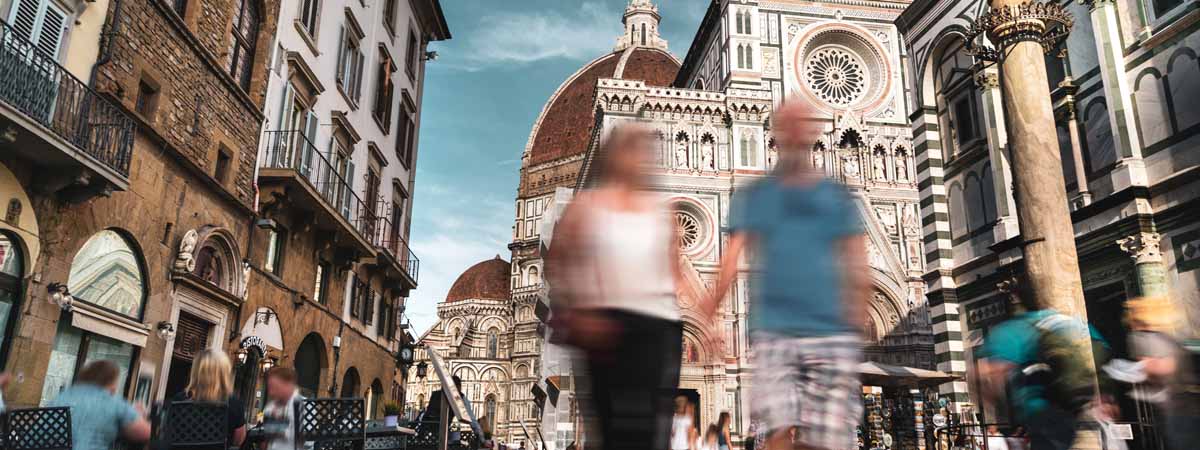
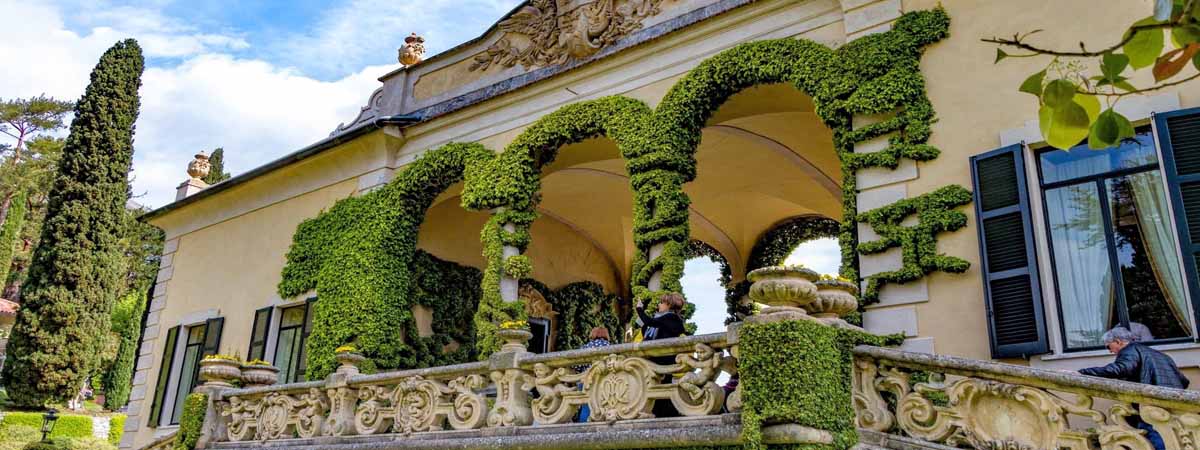

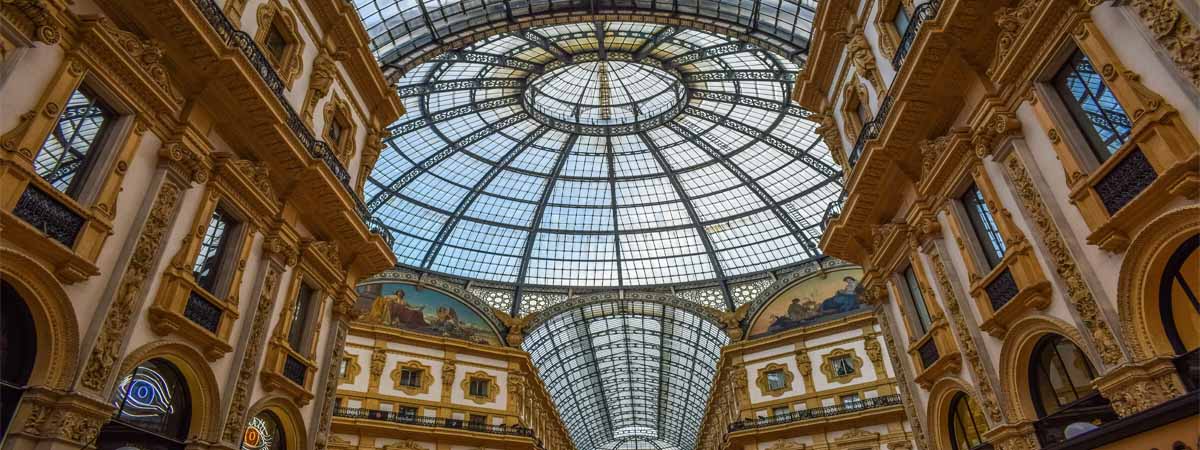

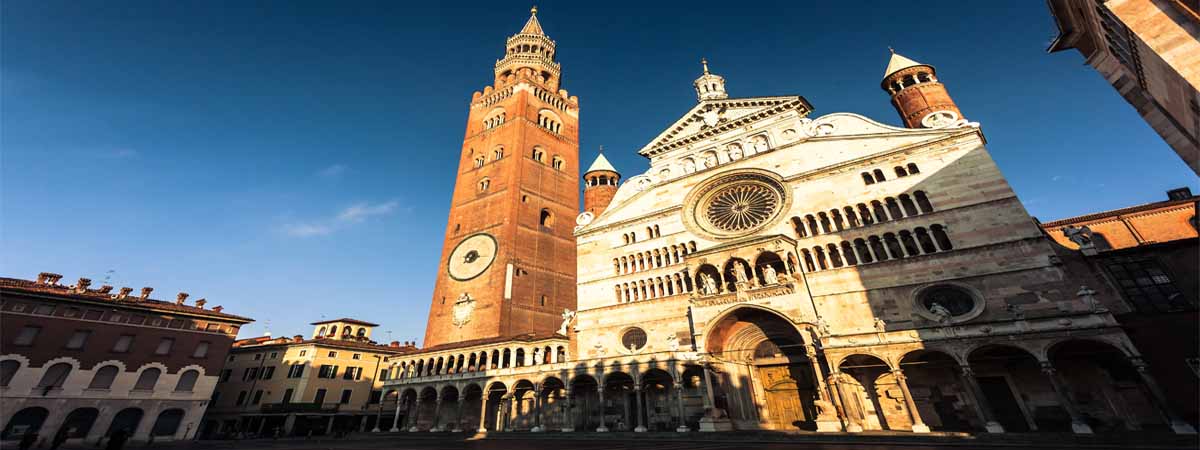
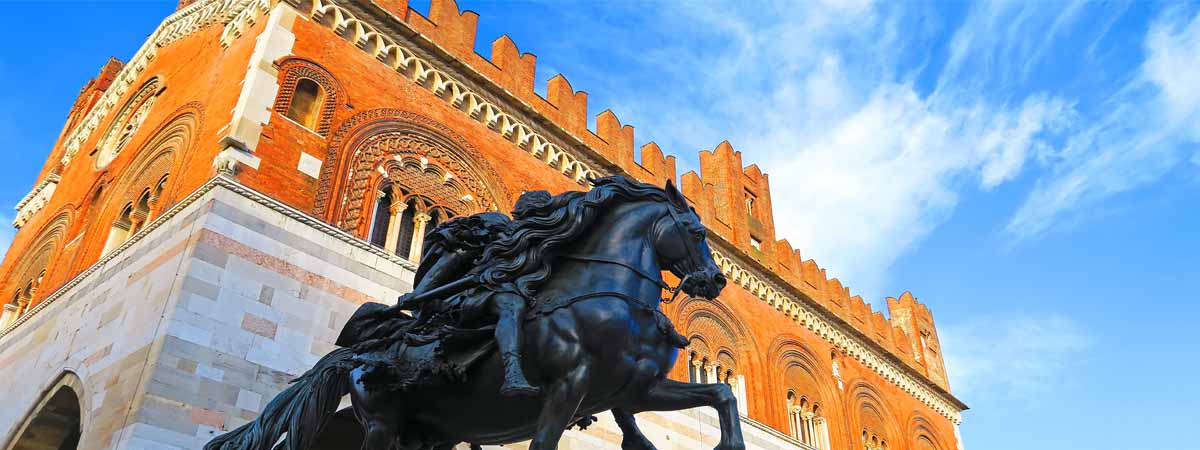
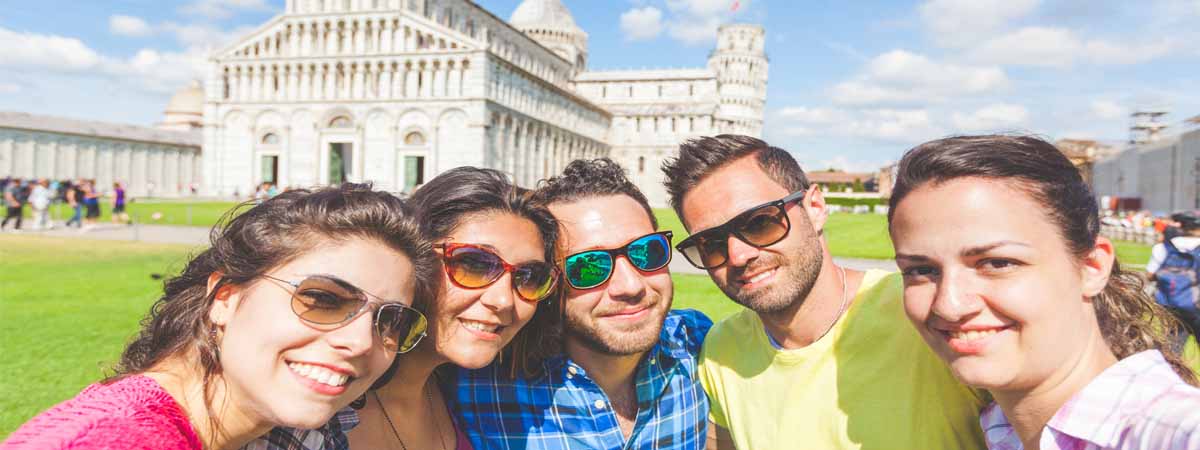
Travel Guides
[wudrelated include="1837"]
The Lombardy Region of Italy
[wudrelated include="2510"]
The Cities of Lombardy, Italy
[wudrelated include="3493"]
